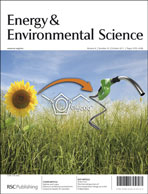A detailed analysis of U.S. energy consumption was performed to determine the amount of primary energy consumed as a function of its utilization temperature from 0 to 260 °C. The study highlights the changes that have occurred in U.S. energy use since the 1970s and suggests how renewable energy could provide a large fraction of the energy used for direct use at low end-use temperatures that is currently mostly supplied by high grade fossil fuels. For example, most of the low-temperature energy used for water and space heating is provided by combusting natural gas and oil at very high temperatures. This process downgrades the thermodynamic potential of the fossil fuels for generating power resulting in large reduction in the exergy or availability of the combustion products. By focusing attention on the thermodynamic losses inherent to our current energy system, we suggest a paradigm shift in the way we view and use energy by strategically matching the source providing the energy to the end-use temperature of the application. Thermal energy demands below 260 °C could be supplied more sustainably without large exergetic losses by geothermal or solar thermal energy resources, as well as by waste heat from fuel combustion processes. In addition, direct thermal use of available low-temperature thermal energy results in higher overall efficiencies compared to electricity generation by avoiding the substantial 2nd Law losses incurred in converting thermal energy to electricity. Using the U.S. Energy Information Administration database as a primary source of information, we found that the total thermal demand in the temperature range from 0 to 260 °C in 2008 was 33.5 EJ (31.7 quads), which is about one third of the entire U.S. demand. More than half of the thermal energy demand below 260 °C (55%) comes from the residential sector, while the rest comes from the industrial (24%) and commercial (21%) sectors. Additionally, almost 80% of 33.5 EJ is used to provide heat below 150 °C. Space heating and water heating have end-use temperatures of 40 to 60 °C and are responsible for 38% of the thermal energy consumption below 260 °C in the residential and commercial sectors.

You have access to this article
 Please wait while we load your content...
Something went wrong. Try again?
Please wait while we load your content...
Something went wrong. Try again?


 Please wait while we load your content...
Please wait while we load your content...